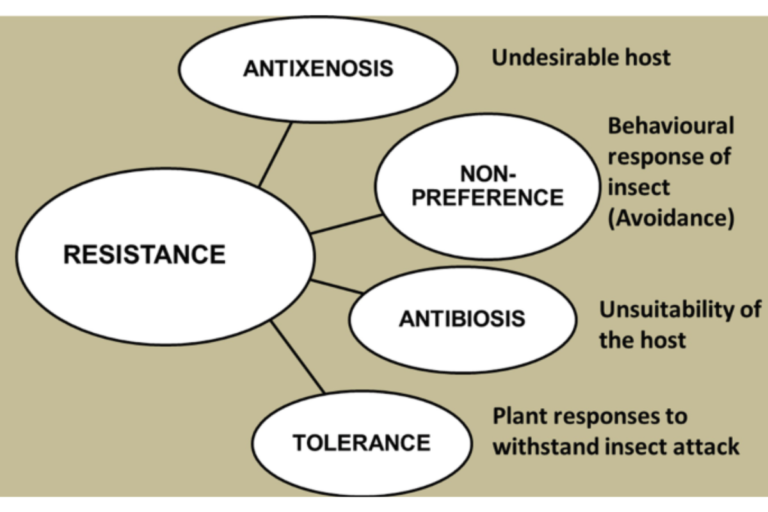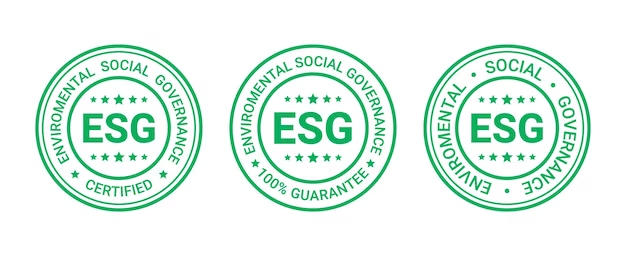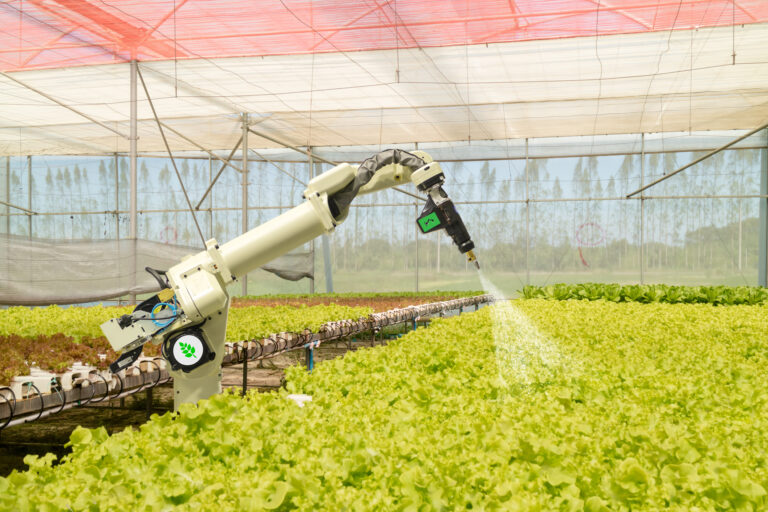small vs large agribusiness: key similarities, differences, and sustainability trends
Small vs large agribusiness is a defining comparison in today’s food system. From family farms to corporate-scale operations, these enterprises share surprising similarities — and face distinct challenges. This article explores how small and large agribusinesses compare, where they diverge, and how innovation and sustainability are shaping their futures.

From small family farms to large corporate operations, agribusiness is the business of farming and is the foundation of our modern food system. Driven by major environmental and social issues, the conversation around small vs large agribusiness is more relevant than ever as consumers, policymakers, and producers examine how scale affects sustainability, profitability, and resilience. Despite vast differences in size, agribusiness at any scale shares common goals and challenges. In this article, we’ll look at how farms, big and small, compare — highlighting where their strategies align, where they differ, and how innovation is reshaping agriculture across the board.
What is agribusiness?
Agribusiness refers to the business side of agriculture — from growing crops and raising animals to processing, distributing, and marketing food and fiber. It includes everything from a family-run farm stand to a multinational food corporation.
Unlike the term “agriculture,” which typically refers to the act of farming, agribusiness takes a broader view. It includes the entire value chain: seed and equipment suppliers, processors that turn corn into cereal or livestock into packaged meat, and the logistics companies that get food to grocery store shelves.
Did you know? The word “agribusiness” implies a systems-level view of farming. For example, a dairy farm is part of a larger network that includes feed suppliers, milking equipment manufacturers, cheese processors, and retailers. When looking at small vs large agribusiness, understanding these connections helps clarify why all farms — regardless of scale — operate within a shared ecosystem.
A look at the similarities of small vs large agribusinesses
At first glance, a 50-acre family farm and a 50,000-acre corporate operation might seem worlds apart. However, when it comes to core functions and values, small and large agribusinesses have more in common than many realize.
- Feeding people: Whether local or global, every farm ultimately aims to produce food or agricultural goods. Both small and large farms contribute to food systems and take pride in delivering quality, safe products to consumers.
- Running a business: Regardless of scale, agribusiness is still a business. Farmers must manage budgets, control costs, invest wisely, and adapt to changing markets. Whether you’re growing heirloom tomatoes or managing thousands of acres of corn, financial sustainability is essential.
- Facing risk: All farms — big or small — are vulnerable to unpredictable forces like weather, pests, and price fluctuations. A drought or market shock might affect them differently, but both must plan for uncertainty. Risk management, from crop insurance to diversification, is part of the job at every scale.
- Adapting and innovating: Innovation is a universal trait. A small farmer might experiment with regenerative practices, while a large farm might use drone-based field monitoring. Both are finding ways to work smarter and use technology to boost productivity, resilience, and sustainability.
Whether local or global, family-run or investor-backed, every agribusiness is working to feed people, protect their land, and stay viable in a changing world.
For a balanced look at both sides, see the advantages and disadvantages of agribusiness.
While there’s plenty of common ground when comparing how small vs large agribusinesses operate, scale creates sharp contrasts in everything from financing and market access to technology and policy influence. Read on to explore how these differences manifest and the unique strengths and challenges each faces.
Challenges & opportunities for small agribusinesses
Small agribusinesses, including family-run farms, market gardeners, and niche livestock producers, face unique challenges in today’s food economy.

Challenges for the small players in agribusiness
- By definition, small farms operate with fewer acres and lower output, which often means higher costs per unit. They may struggle to compete with large operations that benefit from bulk purchasing, automation, and scale-driven efficiencies. In comparing small vs large agribusiness, this cost gap is one of the most significant hurdles.
- Many small farms rely on off-farm income to stay afloat. According to the USDA, while 91% of U.S. farms are classified as small, operations with over $250,000 in annual sales produce 85% of the country’s agricultural output. That means small farms are numerous but account for a much smaller share of food production by value.
- Small operations also face labor and capital constraints. Often, a single-family runs the business, handling everything from planting and harvesting to bookkeeping and marketing. Investing in equipment or infrastructure can be a struggle without access to affordable credit or grant programs. In terms of market access, it can also be difficult for small farms to get shelf space in grocery stores or contracts with distributors, especially when larger competitors can supply at scale and lower cost.
- Political influence is another gap. Smaller producers generally have less lobbying power or policy visibility than larger agribusiness firms, which can exclude them from key conversations about regulations, subsidies, and land use.
Opportunities for small agribusiness producers
Despite these challenges, small farms often thrive through agility, creativity, and strong community connections.
- Small agribusinesses are better positioned to serve niche and premium markets—from heirloom vegetables and organic eggs to local honey and agrotourism experiences. By focusing on quality, locality, and sustainability, they can offer a value proposition big farms can’t easily replicate.
- They also tend to build stronger direct relationships with customers. Farmers’ markets, CSAs, and farm-to-table partnerships give small producers a loyal following and often allow them to command higher prices.
- Technology is also helping level the playing field. Affordable tools like mobile-based farm management apps, small-scale drip irrigation, and on-demand equipment rental give small farmers access to innovations once reserved for larger operations. Co-ops and collectives also offer power in numbers, enabling small farmers to share marketing, storage, and supply chain resources.
In an era when consumers increasingly care about where their food comes from, small farms that emphasize transparency, heritage, and sustainable practices are finding ways to stand out.
“People don’t just buy our eggs — they ask how the chickens are doing”
See Strategies small farmers can use to compete for more tips on thriving in a competitive market.
Challenges & opportunities for large agribusinesses
Large agribusinesses — from expansive row crop farms to vertically integrated meat producers — operate at a very different scale, bringing both significant advantages and complex challenges.

Challenges for large players in agribusiness
- Managing a large-scale operation involves extreme logistical and financial complexity. These farms often specialize in monoculture, i.e. growing a single crop like corn, soy, or wheat across thousands of acres. While efficient, monocropping can lead to soil degradation, pest vulnerability, and overreliance on chemical inputs if not carefully managed.
- Large farms also attract scrutiny. Industrial-scale operations are often criticized for their environmental footprint, labor practices, or their role in displacing smaller farms. When a 5,000-acre operation replaces what used to be fifty 100-acre farms, the ripple effects on rural communities are real — from shrinking local school populations to fewer customers for small-town businesses.
- Another issue is high overhead and capital demands. Large farms take on significant debt to acquire land, equipment, and infrastructure. This means they must operate at high efficiency to break even. And because they often depend on global commodity markets, they are vulnerable to supply chain shocks, trade restrictions, or price crashes.
- Governance also adds complexity. Many large agribusinesses have boards, shareholders, and compliance departments — layers of oversight that can slow decision-making or prioritize investor returns over long-term sustainability goals.
Opportunities for agribusiness at scale
Despite these pressures, large farms enjoy major advantages in the small vs large agribusiness landscape.
- They benefit from economies of scale, allowing them to produce food more efficiently and at lower cost. This cost efficiency makes food more affordable for consumers and strengthens supply chain reliability. According to Global Citizen (2023), large farms can afford advanced equipment and are more likely to adopt precision technologies like GPS-guided tractors, soil sensors, and drone monitoring.
- They also have greater access to capital — which enables them to invest in research, expand operations, or adopt next-generation innovations faster than smaller farms.
- Large agribusinesses are often leaders of sustainability at scale. Some implement massive conservation programs or install renewable energy infrastructure like biogas digesters, solar farms, or methane capture systems across thousands of acres or dozens of facilities. These upgrades can have a measurable impact on emissions and resource use.
- Another key strength is vertical integration. Many large agribusinesses control multiple steps in the supply chain, from seed production to packaging and distribution, capturing more value and ensuring consistency.
Large farms often serve national or even global markets. They play a critical role in food security by supplying grocery chains, food processors, and international buyers. When managed responsibly, they can drive innovation, support infrastructure investment, and partner with governments to address large-scale agricultural challenges.
“Scale isn’t the enemy of sustainability — it’s a test of it.”
The role of sustainability & innovation in agribusiness
Across the spectrum of small vs large agribusiness, one thing is clear: sustainability and innovation are no longer optional. They are essential for long-term viability and, increasingly, for market access, regulatory compliance, and public trust.
Sustainable agribusiness practices
Both small and large farms are making strides toward more sustainable operations, which will protect the environment and improve soil health, water use, and business resilience.
- Soil health: A small-scale vegetable farm might rely on cover crops and composting, while a large corn operation may adopt crop rotation and no-till systems across hundreds of acres. The methods vary, but the goal is the same: healthier soil that retains nutrients and moisture.
- Water efficiency: A family farm might install drip irrigation to reduce water waste. A more extensive operation might deploy moisture sensors and variable-rate irrigation systems across fields. Both aim to make every drop count.
- Waste and emissions reduction: Some small farms reduce fertilizer inputs through regenerative practices. Large agribusinesses may invest in methane capture, solar energy, or circular waste systems that recycle byproducts into fuel or feed.
The result? A shared shift toward practices that reduce costs, preserve natural resources, and build long-term resilience — regardless of farm size.
Innovation in agribusiness
Innovation is the great equalizer in modern agriculture. Technology once reserved for industrial operations is now reaching smaller producers, while grassroots farming methods are influencing large-scale change.
- Tech access for small farms: Mobile apps, online marketplaces, and low-cost sensors are helping small farmers manage operations, monitor crops, and connect with customers more efficiently than ever.
- Innovation at scale: Large agribusinesses pilot cutting-edge tools like autonomous tractors, aerial imaging, and AI-driven field analysis — often paving the way for broader industry adoption as these tools become more affordable.
- Two-way exchange: Many sustainable practices, such as agroforestry, integrated pest management, or composting, originated with smaller, regenerative producers and are now being scaled by larger farms. Conversely, technologies developed for big farms (like precision spraying or satellite monitoring) are being adapted for smaller plots.
Policy, market pressure, and consumer expectations are all pushing farms of every size to evolve. Whether it’s through reducing chemical inputs, investing in renewable energy, or participating in carbon markets, agribusinesses are finding ways to stay competitive while building a more climate-resilient food system.
The future of farming doesn’t depend on size — it depends on shared responsibility, better tools, and a willingness to innovate together.
The outlook for small vs large agribusiness
The conversation around small vs large agribusiness highlights how scale shapes the opportunities, challenges, and responsibilities in modern farming. Both models play important roles in the global food system, and each brings unique strengths to the table.
Sustainability, innovation, and adaptability are becoming non-negotiables — regardless of size. As these pressures grow, successful agribusinesses will be those that learn, evolve, and contribute to a more resilient and regenerative agricultural future.

Q&A: small vs large agribusiness
Q: What’s the difference between agriculture and agribusiness?
A: Agriculture refers to farming itself — growing crops or raising animals. Agribusiness includes that, plus all the related industries: seed suppliers, food processors, logistics, marketing, and more. It’s the whole food economy from farm to fork.
Q: Why does the small vs large agribusiness conversation matter?
A: Because scale impacts everything — from costs and sustainability to access and influence. Understanding both sides helps us support a food system that works for farmers, consumers, and the planet.
Q: Are big farms worse for the environment?
A: Not inherently. Large farms can have a more significant impact if not managed well, but they also have the resources to implement sustainability programs at scale. It comes down to how they farm, not just how big they are.
Q: Can small farms compete in today’s food economy?
A: Yes, especially when they focus on niche markets, quality, local relationships, or sustainable practices. Technology and collaboration are helping smaller producers stay competitive and relevant.
Enjoyed this exploration of small vs large agribusiness?
Subscribe to the Ecosystems United newsletter for more engaging stories on sustainable agriculture, food innovation, and how agribusiness is evolving at every scale. Whether you’re a farmer, a foodie, or simply food-curious, we’ll bring you insights that inform and inspire.
From farmstand to the global supply chain, let’s grow a more sustainable food future.



